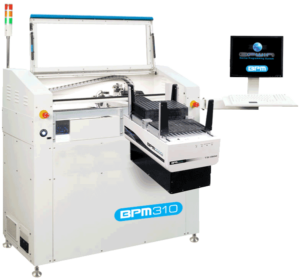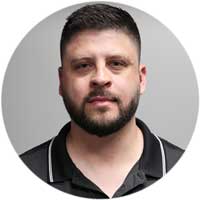
White Paper: Enhancing Efficiency and ROI, A Comprehensive Guide to Offline In-Socket Programming for Electronics Manufacturers
White Paper: Enhancing Efficiency and ROI, A Comprehensive Guide to Offline In-Socket Programming for Electronics Manufacturers
Introduction: The Evolution of Device Programming Methods
In the ever-evolving world of electronics manufacturing, the need for cost-effective and efficient in-socket programming solutions has become increasingly important. As technology continues to advance, new devices require more sophisticated programming methods to meet the demands of modern applications. Over the years, several approaches have been developed to address the programming needs of these devices, including in-circuit test (ICT) programming, functional test programming, and outsourcing programming to external vendors.
The selection of a programming method can significantly impact a company’s bottom line, as well as the quality and reliability of the end product. Each of these programming methods has its own set of advantages and challenges. However, recent developments in offline in-socket programming have emerged as a promising solution that offers a unique combination of speed, quality control, cost reduction, and scalability.
This white paper will provide an in-depth look at offline programming, comparing its value proposition with that of alternative programming methods such as ICT, functional test, and outsourcing. It will guide you through a comprehensive evaluation of the real costs associated with each method, using questions that help identify these costs and quantify them with Return on Investment (ROI) or Cost per Device (CPD) calculations where applicable. To illustrate the benefits of in-socket programming, we will also explore several case studies showcasing the successful implementation of this method in different scenarios.
Offline In-Socket Programming: A Comprehensive Solution
The Power of Offline Programming
Offline in-socket programming is a method that allows the programming of devices, such as microcontrollers and memory components, separate from the manufacturing line. By programming the devices within a socket, manufacturers can save time and resources while maintaining a high degree of control over the process. In recent years, offline programming has emerged as a powerful solution to many of the challenges faced by manufacturers seeking efficient and cost-effective programming options.
Key Advantages of In-Socket Programming
One of the most significant benefits of in-socket programming is the reduction in programming time. This method enables parallel programming of multiple devices, which significantly reduces the time spent on this stage of the manufacturing process. As a result, manufacturers can increase production throughput, decrease lead times, and respond more quickly to market demands.
Learn more–
- Quality control
- Lower labor costs
- improved scalability and flexibility
- Streamlining Logistics and Supply Chain Management
Offline programming offers a comprehensive solution that addresses many of the challenges faced by manufacturers in the electronics industry. With its potential to reduce programming time, improve time to market, enhance quality control, lower labor costs, and streamline logistics, this method has become an increasingly attractive option for businesses seeking to optimize their device programming processes.
Additional Resources:
- EE Times: A valuable resource for electronics engineers and professionals, providing news, analysis, and insights into the latest developments in the electronics industry. (https://www.eetimes.com)
- In-Circuit Test (ICT): An informative article on the ICT method of testing electronic components and assemblies. (https://en.wikipedia.org/wiki/In-circuit_test)
- Device Programming: A comprehensive overview of device programming methods and technologies. (https://en.wikipedia.org/wiki/Device_programming)
- IEEE Xplore: A digital library providing access to a wide range of technical literature in electrical engineering, computer science, and electronics. (https://ieeexplore.ieee.org)
- Semiconductor Equipment and Materials International (SEMI): A global industry association representing the electronics manufacturing supply chain, providing resources, standards, and networking opportunities. (https://www.semi.org)
- IPC: A global trade association dedicated to the electronics industry, offering industry standards, certification programs, training, and market research. (https://www.ipc.org)


 Device programming, at its core, involves
Device programming, at its core, involves  Automated Programming Systems: The
Automated Programming Systems: The 

 BPM is delighted to welcome Enrique Prieto as National Sales Manager for
BPM is delighted to welcome Enrique Prieto as National Sales Manager for